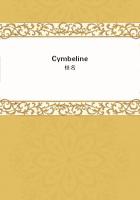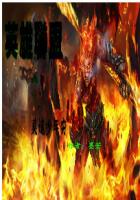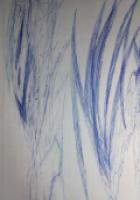Give to barrows, trays, and pans Grace and glimmer of romance;
Bring the moonlight into noon Hid in gleaming piles of stone;
On the city's paved street Plant gardens lined with lilac sweet;
Let spouting fountains cool the air, Singing in the sun-baked square;
Let statue, picture, park, and hall, Ballad, flag, and festival, The past restore, the day adorn, And make each morrow a new morn.
So shall the drudge in dusty frock Spy behind the city clock Retinues of airy kings, Skirts of angels, starry wings, His fathers shining in bright fables, His children fed at heavenly tables.
'T is the privilege of Art Thus to play its cheerful part, Man in Earth to acclimate, And bend the exile to his fate, And, moulded of one element With the days and firmament, Teach him on these as stairs to climb, And live on even terms with Time;
Whilst upper life the slender rill Of human sense doth overfill.
ESSAY XII _Art_
Because the soul is progressive, it never quite repeats itself, but in every act attempts the production of a new and fairer whole.
This appears in works both of the useful and the fine arts, if we employ the popular distinction of works according to their aim, either at use or beauty. Thus in our fine arts, not imitation, but creation is the aim. In landscapes, the painter should give the suggestion of a fairer creation than we know. The details, the prose of nature he should omit, and give us only the spirit and splendor.
He should know that the landscape has beauty for his eye, because it expresses a thought which is to him good: and this, because the same power which sees through his eyes, is seen in that spectacle; and he will come to value the expression of nature, and not nature itself, and so exalt in his copy, the features that please him. He will give the gloom of gloom, and the sunshine of sunshine. In a portrait, he must inscribe the character, and not the features, and must esteem the man who sits to him as himself only an imperfect picture or likeness of the aspiring original within.
What is that abridgment and selection we observe in all spiritual activity, but itself the creative impulse? for it is the inlet of that higher illumination which teaches to convey a larger sense by simpler symbols. What is a man but nature's finer success in self-explication? What is a man but a finer and compacter landscape than the horizon figures, -- nature's eclecticism? and what is his speech, his love of painting, love of nature, but a still finer success? all the weary miles and tons of space and bulk left out, and the spirit or moral of it contracted into a musical word, or the most cunning stroke of the pencil?
But the artist must employ the symbols in use in his day and nation, to convey his enlarged sense to his fellow-men. Thus the new in art is always formed out of the old. The Genius of the Hour sets his ineffaceable seal on the work, and gives it an inexpressible charm for the imagination. As far as the spiritual character of the period overpowers the artist, and finds expression in his work, so far it will retain a certain grandeur, and will represent to future beholders the Unknown, the Inevitable, the Divine. No man can quite exclude this element of Necessity from his labor. No man can quite emancipate himself from his age and country, or produce a model in which the education, the religion, the politics, usages, and arts, of his times shall have no share. Though he were never so original, never so wilful and fantastic, he cannot wipe out of his work every trace of the thoughts amidst which it grew. The very avoidance betrays the usage he avoids. Above his will, and out of his sight, he is necessitated, by the air he breathes, and the idea on which he and his contemporaries live and toil, to share the manner of his times, without knowing what that manner is. Now that which is inevitable in the work has a higher charm than individual talent can ever give, inasmuch as the artist's pen or chisel seems to have been held and guided by a gigantic hand to inscribe a line in the history of the human race. This circumstance gives a value to the Egyptian hieroglyphics, to the Indian, Chinese, and Mexican idols, however gross and shapeless. They denote the height of the human soul in that hour, and were not fantastic, but sprung from a necessity as deep as the world. Shall I now add, that the whole extant product of the plastic arts has herein its highest value, _as history_; as a stroke drawn in the portrait of that fate, perfect and beautiful, according to whose ordinations all beings advance to their beatitude?















